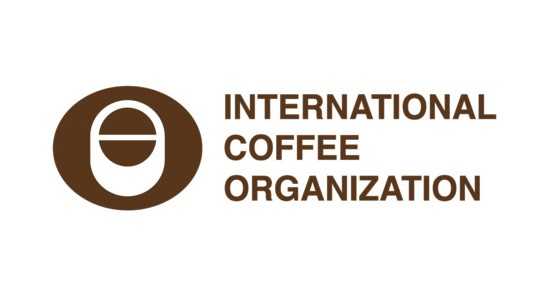LONDON, UK – November 2019 marked the first time in the last 12 months when the ICO Composite Indicator consistently stayed over 100 US cents/lb. According to the latest report from the ICO, the monthly average of the Indicator rose 10.1% to 107.23 US cents/lb amid expectations of a global deficit in coffee year 2019/20, estimated at 502,000 bags. Global exports of coffee in October 2019 fell by 13.4%, to 8.91 million bags, compared to the same month in the previous year.
A mix of factors, including unfavourable weather patterns and prolonged low international prices, have contributed to a decline in shipments across all regions.
The ICO composite indicator rallied in November 2019, reaching a 12-month high, even as the Brazilian Real slumped to a record low against the US Dollar.
The daily price of the ICO composite rose from 102.74 US cents/lb at the beginning of November to a high of 111.86 on 25 November 2019, before closing the month at 111.77 US cents/lb. While the daily price has been on an upward trend since mid-October 2019, the November average of 107.23 US cents/lb was 10.1% higher than last month.
Prices for all group indicators rose in November 2019. Brazilian Naturals saw the largest increase, of 12.1%, to 109.94 US cents/lb, reflecting in part the biennial decline in the production of Brazilian Arabica as well as the weakness of the Brazilian currency.
Other Milds rose 11% to 140.98 US cents/lb, while Colombian Milds rose 10.6% to 146.12 US cents/lb. The differential between Colombian Milds and Other Milds continued its ascent in November 2019, rising 0.8% to 5.14 US cents/lb. Prices for Robustas increased 6.8% month-on-month to 73.28 US cents/lb.
Arbitrage between Arabica and Robusta coffees, as measured on the New York and London futures markets, increased sharply to 50.31 US cents/lb, its highest level since January 2017. The New York futures market rose 10.6%, to an average of 113.31 US cents/lb in November 2019, as certified stocks fell to their lowest level since June 2018, while the London futures market climbed 8% to 63 US cents/lb.
The volatility of the ICO composite indicator increased by 0.9 percentage points to 7.1% over the past month. Amongst the Arabica group indicators, the volatility of Colombian Milds saw the biggest increase—of 1.2 percentage points—to 7.2%, while the Other Milds’ and Brazilian Naturals’ volatility increased 0.8 percentage points to 6.9% and 1.1 percentage points to 9.2%, respectively. The Robustas group indicator registered an increase of one percentage point in its volatility, to 6.2%, due to uncertainties over the October-September crop and Brazil’s upcoming 2020/21 crop.
Global exports in October 2019 totalled 8.91 million bags, their lowest monthly level since September 2017, says the ICO. This represents a drop of 13.4% compared to the same period in the previous year, and of 2.4% compared to October 2017. Shipments of Robustas fell 21.6% to 2.82 million bags and Arabicas fell 9% to 6.08 million bags.
Other Mild Arabicas saw the largest decline, falling 23.2% to 1.33 million bags, while Brazilian Naturals fell 9.5% to 3.44 million bags. Colombian Milds, conversely, saw an increase of 13.5% to 1.31 million bags compared to October 2018. The depreciation of the Colombian Peso against the US Dollar for much of 2019 could be a contributing factor for higher shipments of Colombian Milds.
Exports from South America amounted to 5.29 million bags in October 2019, led by 3.42 million bags from Brazil. Brazil’s exports—which accounted for 38.4% of the total coffee exports in October 2019—fell 12.9% compared to October 2018, owing to its smaller 2019/20 off-year crop. Despite the monthly fall in shipments compared to 2018, Brazil’s export total to date for its 2019/20 crop year is at a record level of 23.62 million bags. This is 7.2% greater than its next highest level of 22.04 million bags, reached in April–October 2014.
At 1.21 million bags, Colombian exports grew 13.9% in October 2019 compared to the same month in 2018. Green coffee exports rose 15.5% as the main harvest began, while the small but steadily growing volumes of roasted coffee exports grew 41.4% to 16,934 bags. Exports of soluble coffee fell 9.2% compared to October 2018. However, the year-to-date total of 672,791 bags was the second highest total of soluble exports for Colombia for the period. The United States continues to be the major destination for Colombian coffee, accounting for 44.8% of its October 2019 exports. It was followed by Germany, which accounted for 9.2% of the total coffee exports in the month.
Exports from Asia & Oceania fell by 23.5% to 2.26 million bags in October 2019. The decline chiefly reflects smaller shipments from Viet Nam, whose Ministry of Agriculture and Rural Development estimated exports of 1.45 million bags for the month. The sharp fall in exports was accompanied by reports of farmers delaying sales of their beans due to low domestic prices for coffee.
A decline in shipments was also observed in India, where production has been affected by erratic weather patterns, heavy rains and flooding for the past two years. Local reports have additionally attributed lower harvests to an increased incidence of the white stem borer earlier in the year.
Exports from India were estimated at 350,000 bags in October 2019, 2.5% below the same period a year earlier and 22% below the same period in 2017. Meanwhile, exports from Indonesia—which had fallen in coffee year 2018/19 amid tightening supplies from Sumatra—more than doubled to 342,464 bags in October 2019.
Uganda’s exports of 378,238 bags led shipments from African countries, followed by Ethiopia. The total volume of exports from the region was 958,055 bags. In comparison with the same month in the previous year, Arabica exports from Uganda fell 30% to 75,501 bags, while Robusta exports rose by 24.6% to 302,737 bags. Exports of Arabica from Uganda have declined for most of 2019, dropping 16.6% in the first ten months compared to the same period in 2018.
However, the increase in Robusta exports have more than offset the fall, and as a result total exports from the country increased 7.4% for the same period. The Uganda Coffee Development Authority attributed this increase to good main and secondary harvests on account of favourable weather in 2019.
With an export volume of 403,635 bags, Mexico & Central America started the coffee year with a 17.3% decline in shipments compared to October 2018. The region’s total exports were dragged down by falling shipments from Costa Rica, Honduras and Mexico. Honduras—which is Central America’s largest Arabica producer, and the world’s fourth largest—saw its shipments fall by 25.8% to 74,980 bags.
Besides falling prices, harvests in the country are reported to have been affected by an increased incidence of pests and diseases, as well as an ongoing drought that led to the declaration of a national emergency in September. Elsewhere in the region, Costa Rica’s shipments dropped by 66.2%, to 11,853 bags, which was its lowest monthly export volume since August 1980. The fall is expected to continue into November 2019 as the country reels from a recent outbreak of coffee leaf rust.
The ICO maintains its preliminary forecast of a small global deficit of about 502,000 bags in coffee year 2019/20. Despite a slowdown in growth, consumption is predicted to overtake production during the course of the year.
Most of the growth in consumption, in both absolute and relative terms, is expected to come from Asia & Oceania. On the production side, Brazil’s smaller off-year Arabica crop and adverse weather in parts of Central America and Asia could continue to affect prices in the coming weeks.
However, the impact of these factors may be muted due to the recent weakness of the Brazilian Real as well as the upcoming on-year crop in Brazil.
















